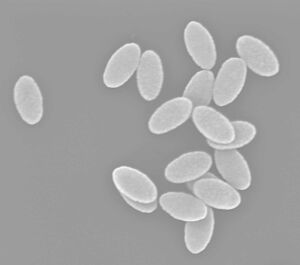The Molecular Diagnostics team at the AIT Center for Health & Bioresources, together with European partners, demonstrates how gold nanoparticles can be produced so that size, shape, and optical response are precisely controllable and remain almost identical across multiple production batches. Furthermore, these “consistent” particles can be tuned to specific colors of light, stabilized in solution, and prepared for biological applications. This creates a reliable basis for modern imaging methods and laboratory studies, as in the AIT-coordinated EU project REAP, which is investigating new approaches to breast cancer diagnostics.
Optical methods only deliver clear, comparable images if the contrast agents used respond reliably. With conventional metal nanoparticles, particle quality varies: even small differences in size and shape lead to noticeable differences in the image and make evaluation more difficult.
Consistent particles, predictable signal
The team manufactures nanoparticles so precisely that their deviations in length and width are only within a very small percentage range. Practically, this means the particles behave almost identically under light; their optical “echo” can be defined at the drawing board and then appears in the laboratory as planned. In addition, the particles are provided with a protective polymer shell (PEG), which keeps them stable in biological solutions and allows them to be taken up by cells; standardized laboratory tests showed good tolerability.
As AIT expert Stefan Schrittwieser explains, this is precisely the key to application: “For biomedical imaging, reproducibility is what counts. When the geometry and optical response of a nanoparticle are precisely defined, a promising concept becomes a reliably usable tool.”
Benefit for REAP and beyond
The precisely adjustable, stable nanoparticles are suitable as contrast agents for novel, combined imaging methods, such as those being developed in the EU project REAP to make therapy-tolerant tumor cells visible. They also open up prospects for sensing and photothermal approaches to cancer therapy. Since the manufacturing process is scalable, later production in larger quantities is also conceivable.
Link to the paper: https://pubs.rsc.org/en/content/articlelanding/2025/nr/d4nr02677b
REAP project Website: https://www.projectreap.eu



